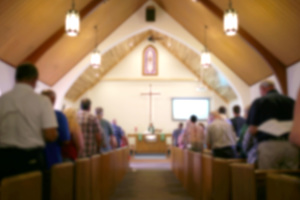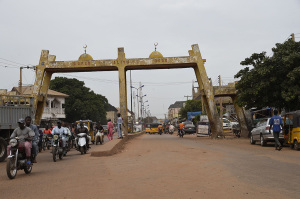How a cancer treatment hospital in Mexico is mixing faith, food and science to save lives

TIJUANA, Mexico — At the Oasis of Hope Hospital, located about seven miles away from the San Ysidro border crossing in San Diego, California, patients who say they have been blessed by the work of the alternative cancer treatment clinic are singing praises to both God and the medical team helping to keep them alive.
For 42-year-old Candice Pilcher from Tampa, Florida, who started her care at the clinic two years ago to face down stage IV breast cancer for the second time, she “just knew that the Lord did not want me to go (die).”
“I originally went the traditional way, and I knew that that was not the path for me,” she told The Christian Post about how she first started her cancer treatment.
“[God] gave me a lot of patience to find this place through some connections back home in Tampa. And the woman who told me about this place had come here and had great success, and she's still doing well,” Pilcher says.
Now, after previously going through periods where she regularly had to deal with pain while pursuing traditional cancer treatment, Pilcher says she is doing better, too, thanks to a treatment plan that focuses on her physical, emotional and spiritual well-being.

“I'm a stable patient [now]. Yes. So it's been a blessing. It's been a true blessing,” she says. “I tell everyone about it back home. So when someone's diagnosed, a family member is diagnosed, then I'm always sharing ... It’s not just the meds. It's not just that. This is more than that. It's the staff. It's the devotionals. You can feel the Lord is in the building.”
Former stand-up comic and radio talk-show host, Rick Hill, says Oasis of Hope Hospital saved his life. Hill, who is now 72, recounted in the lobby of the Sheraton San Diego Hotel and Marina last month — where this CP reporter and others stayed during a tour of the Oasis facility — how he was just 24 in 1974 when he was diagnosed with late-stage high-grade embryonal cell carcinoma at the Mayo Clinic in Rochester, Minnesota. The diagnosis forced him to have a serious conversation with God.
“I went through my stage of, why me? You know, crying in a bucket. I'm 24 years old [telling God] look what you handed me. Take it back. I don't want it,” he says.
Hill, who grew up in a depressed neighborhood on the outskirts of Detroit with “junk cars sitting all over the place and half of us did snuff,” said he promised God that if He let him live, he would change his life.
“Day before I was scheduled for chemo, a Baptist pastor sent me a letter. I got it on a Friday,” Hill said, noting that he tells the complete story in his 2012 book, The Cancer Conundrum: Stop Dying-Start Living.
“He said, ‘If you want to live, you're going to have to leave the Mayo Clinic.' I said, 'Where do you want me to go?' He said, ‘Are you sitting down? Tijuana.'
“I'm thinking, Tijuana? I don't want Chiclets. What is the matter with you? I'm dying here. He says, 'You got to go somewhere where people understand the body. Not somewhere where they can sell you drugs,'” Hill recalled.

Hearing that from the Baptist pastor, he said, made all the difference for him, and he was sold.
“When I told my family, I was thinking about going down there ... they divorced me. Two of my brothers said if you go down there, we'll never talk to you again, ever,” he recalled, noting that he told himself, “If I don't go down there, you won't be able to talk to me anyway. Unless you go to Forest Lawn and remember where they put me.”
Prior to getting treatment at Oasis for Hope Hospital, Hill recalls how poor his diet was.
“I wasn't [too] out of line, but I went to McDonald's two, three times a week. I drank a lot of soda pop. My mother fried, bless her heart, she could fry Jell-O and make it better. Everything was fried,” he says.
When he got to the clinic, Hill had to detox from his diet like a drug addict and “that's no fun when you've been eating all that good fried food,” he says.
After treatment at Oasis for Hope Hospital, Hill says he practiced eating healthy religiously for five years and would even fast three days each week.
“I was so clean. I squeaked when I walked,” he explains.
Hill, who now lives in San Diego, says he also found himself living with more purpose. He began setting goals, got rich twice and at the age of 72, still enjoys a healthy life with no major health issues.
Oasis of Hope
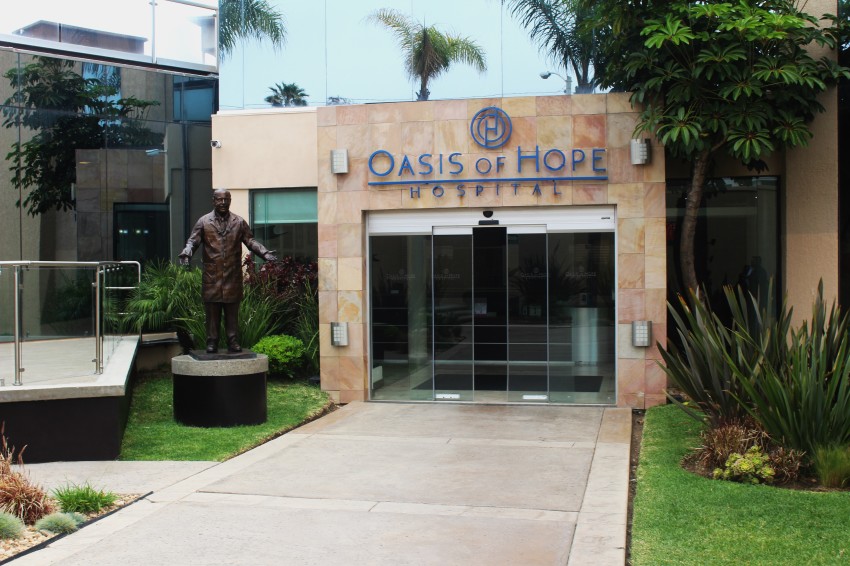
Founded in 1963 by the late Christian physician and researcher Dr. Ernesto Contreras Sr. and his wife, Rita Pulido, Oasis of Hope Hospital’s deep focus on faith is a major part of the clinic’s mission to care for the whole person: “body, mind and spirit.”
“Sharing the healing power of faith, hope and love. Advancing medical science, one person at a time,” the clinic’s mission statement says.
It’s one of the main reasons the Oasis of Hope medical team, led by the founder’s son, Dr. Francisco Contreras, claim a five-year survival rate against all cancers treated at the clinic to be as much as three times the survival averages of cancer patients in the U.S.
“The way I see it, because I understand faith, even if I do an operation, the healer is God,” Contreras, who wrote the 2020 book, The Art & Science of Undermining Cancer: Strategies to Slow, Control, Reverse, told CP.
In addition to his roles as an oncologist, surgeon, director president, and chairman of Oasis of Hope Hospital, Contreras’ treatment of his patients appears almost pastoral when they're in his care.
“One of the things that I spent the most time with my patients [doing] is letting them know that through tribulations, God will show Himself. And that many times, because we don't look to God, and we don't know God, we miss the opportunities that God provides you through tribulation, even with death,” he says.
“The miracle of miracles is you go into Heaven to a place where there's no more doctors, no more needles, no more X-rays. Right? So that's the ultimate miracle. And so, the Bible is just full of stories that seem so unfair. And I talk to them about that. That in spite of that unfairness, that seems to us unfair, God has a plan,” he says.
“The biggest unfairness in the Bible is that Jesus ended up on the cross. And we go, ‘Thank God for you being so unfair,’ because if it were not for that sacrifice, I would have no path to Heaven, right? So I really spend a lot of time talking to [them] because it's easy when you have a miracle and when things are going fine. But when troubles come, then your faith starts to crumble,” he adds.
“There are so many promises in the Bible about healing,” he explains, noting that sometimes the healing doesn’t come, and the tumors grow.
Regardless of what happens, Contreras says, “God is still there with us in it. I don't understand it. But I believe that God is going to reward me with eternal life in Heaven, free of all suffering. But it's then, not now.”
Gwen Garza

While many of the clinic’s patients, like Pilcher, sought alternative cancer treatment after enduring a course of traditional treatment at major hospitals, 60-year-old Gwen Garza said she immediately thought about alternative cancer treatment the moment she was diagnosed because she had been following Contreras’ message on Christian television for years. She still ended up doing two months of chemotherapy before transferring her treatment to the Tijuana clinic.
“I actually began seeing Dr. Contreras on the Daystar network on the Joni Lamb show quite often. We're going back 15, 20 years, probably. And I just began gleaning from him. At that time, my husband was going through a lot of health challenges, so I was really immersing myself in a lot about knowledge of health and whatnot,” said Garza, an ordained minister who lives in Redding, California, but hails from Chicago, Illinois.
“Last year, [when I] was diagnosed with cancer, the first thing that came to me was Oasis of Hope. I already knew what I wanted, so I came here first before I did any treatments in the United States,” she said.
When it comes to her care, Garza believes she is being led by the Holy Spirit. She talks about learning from the testimony of Christian wellness crusader Chris Wark, who says he used nutrition and natural therapies to get better instead of chemotherapy after he was diagnosed with stage 3 colon cancer at the age of 26. He tells his story in the book Chris Beat Cancer: A Comprehensive Plan for Healing Naturally.
“He talks about following that inner voice, and he's a Christian,” Garza said.
“That's what I'm doing. The Holy Spirit is leading me. God is leading me Himself, because everyone's journey is unique. You can see what everyone else is doing, but you really have to know what God is showing you to do, and that's probably what I would say my testimony is,” she said. “Just partnering with the Lord and what He has for me and my life right now.”
And because of this partnership that she has with God in her cancer treatment, Garza is full of hope.
“I feel very hopeful for the future. I want to be used by God for my testimony, to share with others that there's hope in the midst of this, and also your confession, the words out of your mouth,” she says. “Proverb says life and death [is] in our tongue. ... So we have to be very careful what we say, because we create our own energy and our own life or death around us as well.”
At the Oasis of Hope Hospital, faith breeds a palpable spiritual high in patients like Garza and Pilcher, who have fast become friends at the clinic.
“I have three adult children. And they were, to some extent, because I was not going the conventional route, they were fearful,” Garza explains.
“Then what happened was, a friend of mine found out what was going on and she owns her own business. And she gave me all the money upfront for me to come for the first, second and third treatments,” she adds. “That gave my children peace ... they could see that God was with me.”
Championing the body’s immune system
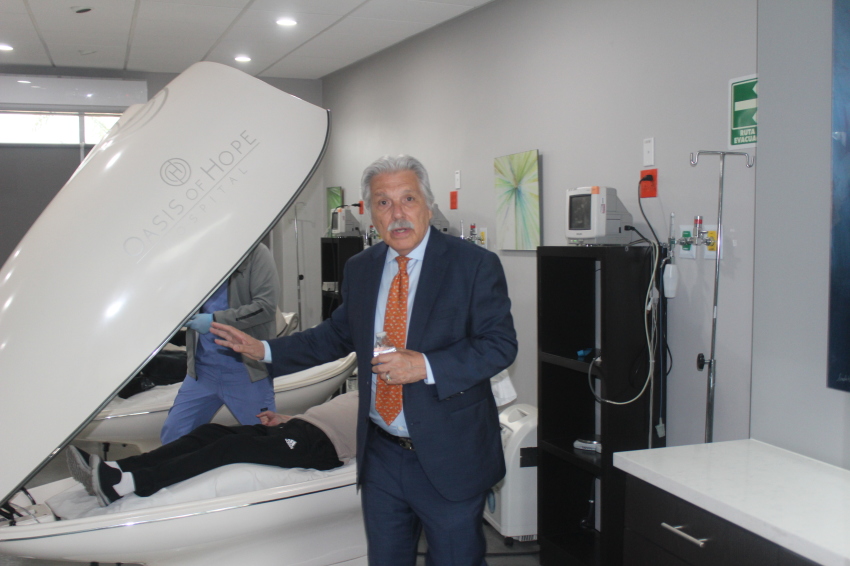
At Oasis of Hope, doctors champion the body’s immune system’s healing power over cancer through the use of a number of therapeutic elements they say help kill cancer cells directly and more efficiently while minimizing the toxic risk to healthy cells. The list of treatments include the dendritic cell vaccine, liposomal nanoceuticals and hyperthermia.
The therapies also include Oasis of Hope’s Apricot Seed Extract Cancer Therapy, which has a strong connection to the alternative cancer therapy that made Dr. Ernesto Contreras and the clinic famous in the late 1960s and 1970s.
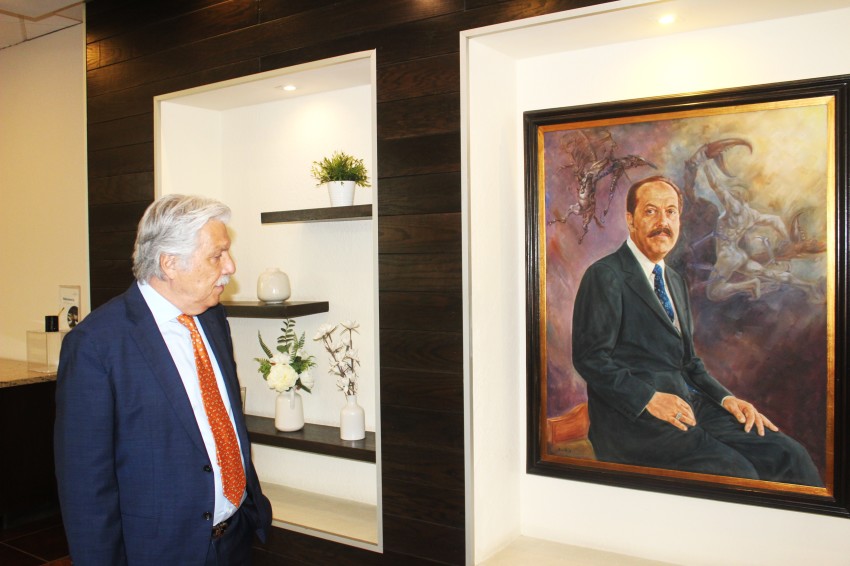
Dr. Francisco Contreras says his father’s use of the compoundLaetrile to treat cancer patients led to him being placed on a list of practitioners who use "unproven methods" in 1971. Laetrile is also known as Vitamin B-17 and amygdalin, according to the National Cancer Institute.
“Amygdalin is a bitter substance found in fruit pits, such as apricots, raw nuts, lima beans, clover, and sorghum. It makes hydrogen cyanide which is changed into cyanide when taken into the body,” the NCI explains, noting that hydrogen cyanide is believed to kill cancer cells.
Laetrile, which is made in Mexico, has not been approved by the U.S. Food and Drug Administration as a treatment for cancer or any other medical condition.
Oasis of Hope Hospital insists on its website that it has been able to effectively use the apricot seed extract.
“The cyanide released through our apricot seed extract therapy is one of the best killers of malignant cells. This has a double punch. It lowers the cancers' resistance to the treatment, and it releases cyanide to kill cancer cells directly,” the clinic states. “Doctors at Oasis of Hope have experienced positive results with this therapy since it was first used by Dr. Francisco Contreras Sr. These results have encouraged us to continue offering this therapy to our patients. The apricot seed extract is looked at as a therapy that can be combined with additional alternative cancer treatments and/or other anti-tumor agents. This is the appropriate future for this therapy.”
Alternative medicine watchdog website quackwatch.org cites a 2019 report by Dr. Benjamin Wilson highlighting “The Rise and Fall of Laetrile,” including how popular the treatment had become in the 1970s after Cecile Hoffman, a San Diego schoolteacher “who had undergone a radical mastectomy in 1959,” became an outspoken advocate of the treatment until her death in 1969.
“By 1974, Dr. [Ernesto] Contreras stated that he was seeing 100-120 new patients per month, with many more patients returning to obtain additional Laetrile. Patients typically were charged $150 for a month’s supply. Contreras acknowledged that few of his cancer patients were ‘controlled’ with Laetrile. While admitting that 40% of the patients displayed no response, he claimed that 30% showed ‘most definite responses’ to the drug,” Wilson notes.
“In 1979, he claimed to have treated 26,000 cancer cases in 16 years. Yet when asked by the FDA to provide his most dramatic examples of success, Contreras submitted only 12 case histories. Six of the patients had died of cancer, one had used conventional cancer therapy, one had died of another disease after the cancer had been removed surgically, one still had cancer, and the other three could not be located,” he adds.
Over the last 60 years, the clinic says more than 100,000 patients have marched through its doors looking for alternatives to the traditional course of chemotherapy, radiation and surgery generally promoted by major hospitals.
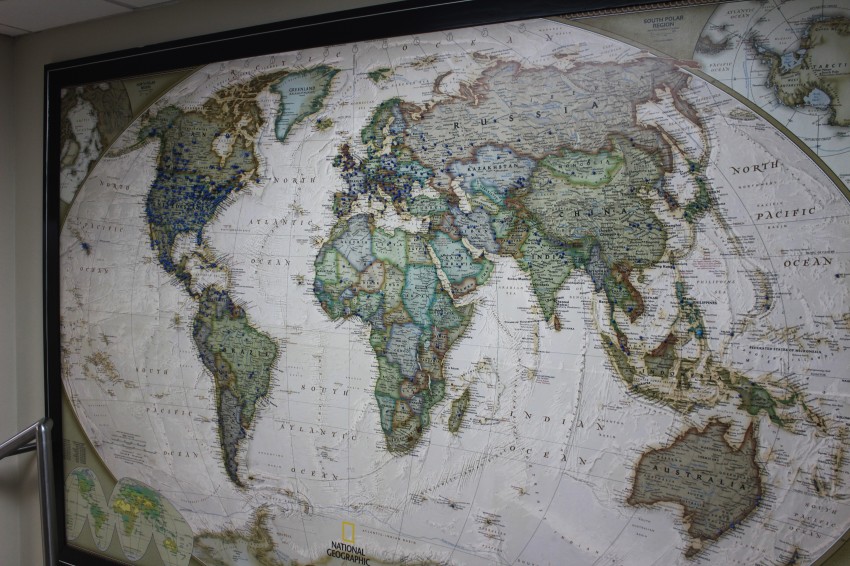
In October 2016, the late megachurch pastor, Bishop Eddie Long, was rumored to be among that number as he sought to treat an unspecified gastrointestinal cancer that had already progressed to stage 4. But a staff member at the clinic at the time told CP that no one had checked in at the facility for care under Long’s name. Long died in January 2017.
As the clinic celebrated its 60th year in a market of alternative cancer treatment centers that has grown much bigger since Oasis of Hope first opened, Dr. Francisco Contreras remains committed to the cause of offering alternative cancer treatment to those who need it.
He tells CP that his father came under attack from big players in the cancer treatment industry because he was offering patients care at a fraction of the cost at American hospitals and was less dependent on the pharmaceutical industry.

While she was not a patient at Oasis of Hope, Texas resident Janet Wood, 70, told CP that she was forced to travel to an alternative cancer treatment center in Tijuana after she had a tumor removed at a local hospital in 2017.
Wood said the tumor developed after she had a double mastectomy in 2009 due to a ductile carcinoma diagnosis. She said after she did surgery to remove her tumor in 2017, the hospital suggested that she do chemotherapy and radiation.
“I was very uncomfortable with that. And I've lost several family members [to cancer]. I've seen them go through chemo and radiation, and I know what it did to their bodies. It was not good. And they did not survive. I knew in my body, in my heart and in my soul that the Holy Spirit was telling me there was no way my body could handle that amount of chemo and radiation. I just couldn't do it. I would not be here today. I truly believe that I would not be here today if I had done that,” she said.
Along with a 16-week course of radiation, the hospital in Texas also asked her to make a down payment of $400,000 and wouldn’t accept her insurance.
She explains that even though she had to foot the $50,000 cost of her care in Tijuana out of pocket, it was significantly less than the price tag she was offered in the U.S.
Wood admits that her cancer did not disappear after the treatment in Tijuana, and she still had surgery when she returned to the U.S. What she learned about how her diet can affect her health over time, however, was life-changing in addition to the money she saved. She now follows a plant-based diet, drinks much more water and is happy to be alive.
According to Precedence Research, the global oncology market size was worth some $265.1 billion in 2020 and is projected to reach over $581.25 billion by 2030. Cancer care costs in the U.S. alone are expected to exceed $245 billion by 2030, a study in the journal of the American Association for Cancer Research shows. Cancer also remains the second leading cause of death behind heart disease in the U.S.
Both heart disease and cancer are impacted by diet, according to Contreras, which is why nutrition is also a big focus at Oasis of Hope Hospital.
Nutrition
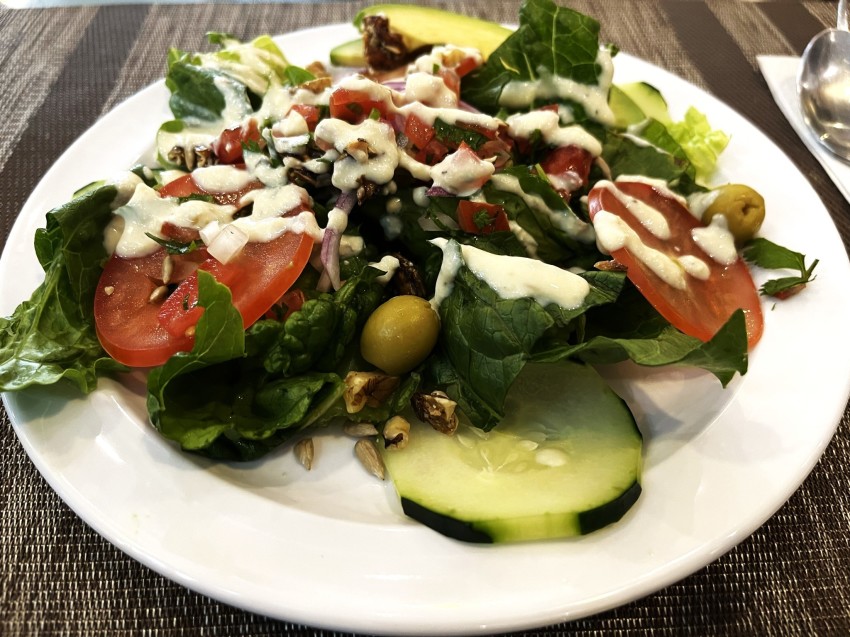
Rosa Contreras Tessada, one of Contreras’ four daughters, serves as head nutritionist at Oasis of Hope Hospital, where she supervises the nutrition program for all cancer patients.
“We realized that a lot of people that came to the hospital didn't know that nutrition was a big part, not only just for them but for their families. A lot of people who came here were just like, ‘Well, what should I eat?” Tessada says.
The mother of two says that’s when, after years of watching her father work, she decided to join the family business as a nutritionist to help patients change their lifestyle around nutrition.
“That's when I joined and I [said], we need to help them change not just their lifestyle, but everybody else's,” she says about her work in the nutrition program at the clinic where approximately 80% of the food served to patients is grown in an in-house garden.
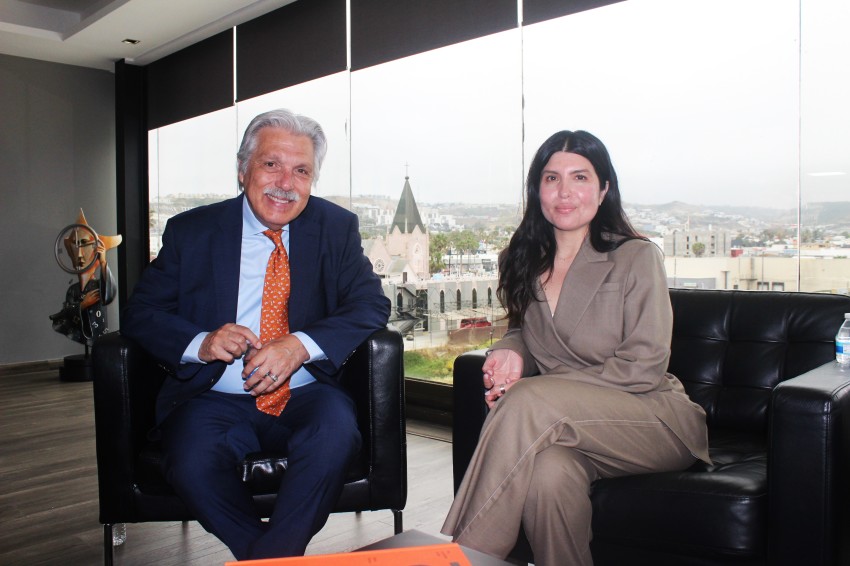
The future
Contreras says Oasis of Hope Hospital is so invested in the work at the clinic they are now working on opening an immune lab in the next three months where they will prepare all kinds of vaccines aimed at treating cancer.
Daniel Kennedy, Contreras’ nephew who serves as Oasis of Hope Hospital’s CEO, tells CP that since his grandfather founded the clinic in 1963, many other alternative cancer treatment centers have cropped up in Tijuana.
“When my grandfather started, there was nobody, so it was us, and we were No.1,” Kennedy says.
He explains that now, the clinic is about “top five.” According to a 2016 Independent report, Tijuana is now home to the largest concentration of alternative cancer treatment centers in the world.

“Lots of people from America have come in, put clinics and invested and brought scientists,” Kennedy says.
The one area where Oasis of Hope maintains an undisputable edge in the growing marketplace, says Kennedy, is their commitment to providing space for people of faith.
We're just not ashamed of the Gospel, and we love it. When people of all religions come here, we want them to feel loved and cared for. We're not evangelizing, but it's really hard to be here and not feel this Spirit of God,” Kennedy says. “The thing that is really different here than any oncology center is the laughter. You will hear patients all the time sitting back at the dinner table and they're laughing and telling stories.”
Contact: leonardo.blair@christianpost.com Follow Leonardo Blair on Twitter: @leoblair Follow Leonardo Blair on Facebook: LeoBlairChristianPost
















